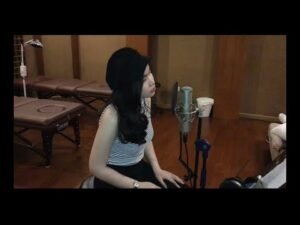Jazz fusion usually makes use of combined meters, odd time signatures, syncopation, complex chords, and harmonies. As noted above, jazz has incorporated from its inception features of African American sacred music including spirituals and hymns. Secular jazz musicians typically performed renditions of spirituals and hymns as a part of their repertoire or isolated compositions corresponding to “Come Sunday,” a part of “Black and Beige Suite” by Duke Ellington.
Hard bop was developed in the mid-Nineteen Fifties, coalescing in 1953 and 1954; it developed partly in response to the vogue for cool jazz in the early Nineteen Fifties and paralleled the rise of rhythm and blues. Miles Davis’ 1954 performance of “Walkin’” on the first Newport Jazz Festival announced the style to the jazz world. The quintet Art Blakey and the Jazz Messengers, led by Blakey and featuring pianist Horace Silver and trumpeter Clifford Brown, have been leaders within the onerous bop movement with Davis.
Armstrong’s solos went properly past the theme-improvisation concept and extemporized on chords, somewhat than melodies. Armstrong’s solos were a major think about making jazz a true twentieth-century language.
Jazz Camp West
The beginnings of a distinct European fashion of jazz began to emerge in this interwar period. In 1924, Louis Armstrong joined the Fletcher Henderson dance band for a year, as featured soloist. The original New Orleans style was polyphonic, with theme variation and simultaneous collective improvisation. Armstrong was a master of his hometown fashion, but by the point he joined Henderson’s band, he was already a trailblazer in a brand new phase of jazz, with its emphasis on preparations and soloists.
Later many other jazz artists borrowed from black gospel music. However, it was solely after World War II that a few jazz musicians started to compose and perform prolonged works intended for non secular settings and/or as non secular expression. Since the 1950s, sacred and liturgical music has been carried out and recorded by many outstanding jazz composers and musicians. The “Abyssinian Mass” by Wynton Marsalis (Blueengine Records, 2016) is a latest example. Since the 1960s, inventive centers of jazz in Europe have developed, such as the creative jazz scene in Amsterdam.
Since the Nineteen Nineties Keith Jarrett has defended free jazz from criticism. British writer Stuart Nicholson has argued European contemporary jazz has an identity totally different from American jazz and follows a unique trajectory. In June 1965, Coltrane and 10 other musicians recorded Ascension, a 40-minute-lengthy piece without breaks that included adventurous solos by young avante-garde musicians as well as Coltrane, and was controversial primarily for the collective improvisation sections that separated the solos. Dave Liebman later called it “the torch that lit the free jazz thing.”.
- Several members of the orchestra remained with him for several decades.
- He typically composed for the style and abilities of these individuals, such as “Jeep’s Blues” for Johnny Hodges, “Concerto for Cootie” for Cootie Williams (which later became “Do Nothing Till You Hear from Me” with Bob Russell’s lyrics), and “The Mooche” for Tricky Sam Nanton and Bubber Miley.
- He also recorded songs written by his bandsmen, such as Juan Tizol’s “Caravan” and “Perdido”, which brought the “Spanish Tinge” to huge-band jazz.
After recording with the quartet over the following few months, Coltrane invited Pharoah Sanders to join the band in September 1965. While Coltrane used over-blowing incessantly as an emotional exclamation-point, Sanders would choose to overblow his entire solo, leading to a constant screaming and screeching in the altissimo range of the instrument. Hard bop is an extension of bebop (or “bop”) music that includes influences from blues, rhythm and blues, and gospel, especially in saxophone and piano enjoying.
A firm avant-garde or free jazz stance has been maintained by some players, corresponding to saxophonists Greg Osby and Charles Gayle, while others, similar to James Carter, have integrated free jazz elements into a more traditional framework. In the early Nineteen Eighties, a commercial form of jazz fusion called “pop fusion” or “clean jazz” grew to become successful, garnering vital radio airplay in “quiet storm” time slots at radio stations in city markets throughout the U.S. In general, clean jazz is downtempo (essentially the most extensively performed tracks are of 90–105 beats per minute), and has a lead melody-enjoying instrument (saxophone, especially soprano and tenor, and legato electric guitar are well-liked). In the late Nineteen Sixties and early Seventies, the hybrid form of jazz-rock fusion was developed by combining jazz improvisation with rock rhythms, electric devices and the highly amplified stage sound of rock musicians similar to Jimi Hendrix and Frank Zappa.
After leaving Henderson’s group, Armstrong formed his Hot Five band, the place he popularized scat singing. See media help.In 1919, Kid Ory’s Original Creole Jazz Band of musicians from New Orleans started taking part in in San Francisco and Los Angeles, the place in 1922 they turned the primary black jazz band of New Orleans origin to make recordings. During the identical 12 months, Bessie Smith made her first recordings. Chicago was growing “Hot Jazz”, and King Oliver joined Bill Johnson. Afro-Creole pianist Jelly Roll Morton began his profession in Storyville.
Mind, Body & Jazz:how Jazz Can Improve Your Health

Individual performers typically play in a variety of types, sometimes in the same performance. Pianist Brad Mehldau and The Bad Plus have explored up to date rock music throughout the context of the traditional jazz acoustic piano trio, recording instrumental jazz variations of songs by rock musicians. The Bad Plus have also incorporated elements of free jazz into their music.
